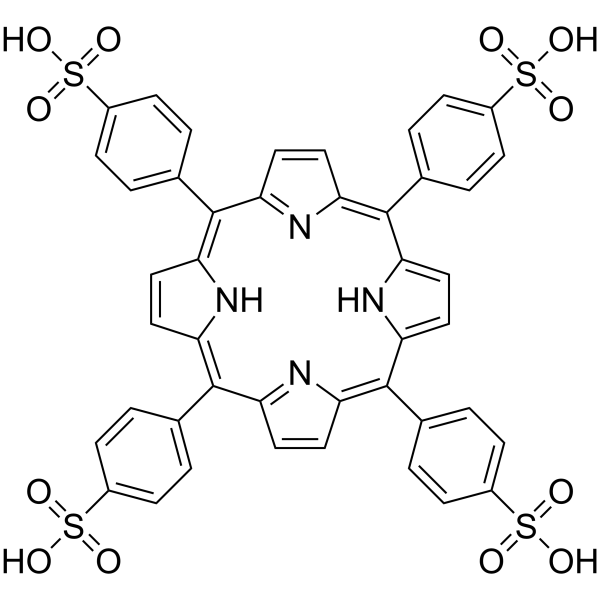Exciton annihilation and energy transfer in self-assembled peptide-porphyrin complexes depends on peptide secondary structure.
Darius Kuciauskas, Juris Kiskis, Gregory A Caputo, Vidmantas Gulbinas
文献索引:J. Phys. Chem. B 114(48) , 16029-35, (2010)
全文:HTML全文
摘要
We used picosecond transient absorption and fluorescence lifetime spectroscopy to study singlet exciton annihilation and depolarization in self-assembled aggregates of meso-tetra(4-sulfonatophenyl)porphine (TPPS(4)) and a synthetic 22-residue polypeptide. The polypeptide was designed and previously shown to bind three TPPS(4) monomers via electrostatic interactions between the sulfonate groups and cationic lysine residues. Additionally, the peptide induces formation of TPPS(4) J-aggregates in acidic solutions when the peptide secondary structure is disordered. In neutral solutions, the peptide adopts an α-helical secondary structure that can bind TPPS(4) with high affinity but J-aggregate formation is inhibited. Detailed analysis of excitation-power dependent transient absorption kinetics was used to obtain rate constants describing the energy transfer between TPPS(4) molecules in an aggregate under acidic and neutral conditions. Independently, such analysis was confirmed by picosecond fluorescence emission depolarization measurements. We find that energy transfer between TPPS(4) monomers in a peptide-TPPS(4) complex is more than 30 times faster in acidic aqueous solution than in neutral solutions (9 vs 279 ps). This result was attributed to a conformational change of the peptide backbone from disordered at low pH to α-helical at neutral pH and suggests a new approach to control intermolecular energy transfer with possible applications in fluorescent sensors or biomimetic light harvesting antennas.
相关化合物
| 结构式 | 名称/CAS号 | 分子式 | 全部文献 |
|---|---|---|---|
 |
四苯基卟啉四磺酸水合物
CAS:35218-75-8 |
C44H30N4O12S4 |
|
Femtosecond to second studies of a water-soluble porphyrin d...
2012-03-06 [Langmuir 28(9) , 4363-72, (2012)] |
|
Preferential solvation and solvation shell composition of fr...
2011-12-01 [Spectrochim. Acta. A. Mol. Biomol. Spectrosc. 83(1) , 213-20, (2011)] |
|
Interaction of monosulfonate tetraphenyl porphyrin (H2TPPS1)...
2011-05-01 [Spectrochim. Acta. A. Mol. Biomol. Spectrosc. 78(5) , 1349-55, (2011)] |
|
Evanescent wave cavity ringdown spectroscopy: a platform for...
2012-03-06 [Anal. Chem. 84(5) , 2585-91, (2012)] |
|
Kinetic effects of tartaric acid on the growth of chiral J-a...
2012-05-18 [Chem. Commun. (Camb.) 48(40) , 4872-4, (2012)] |